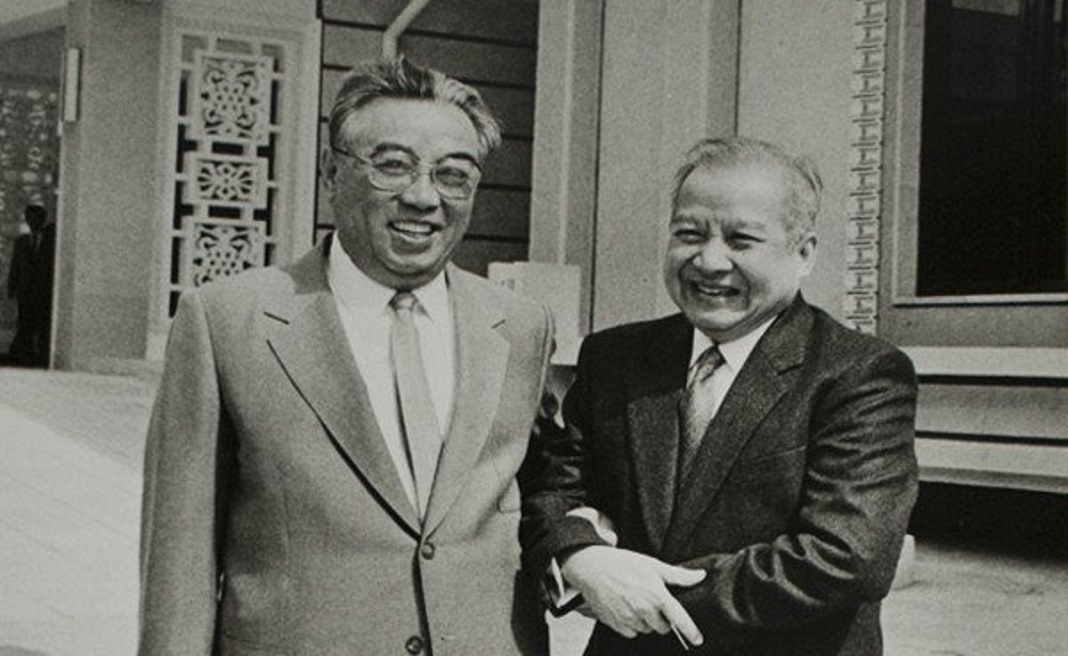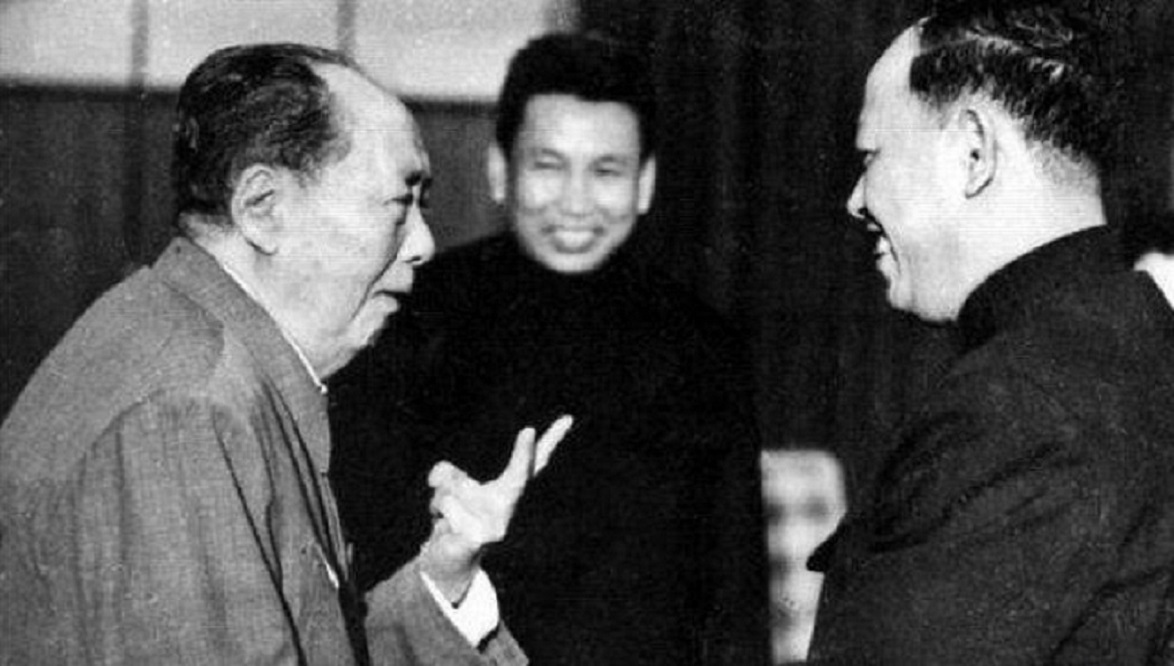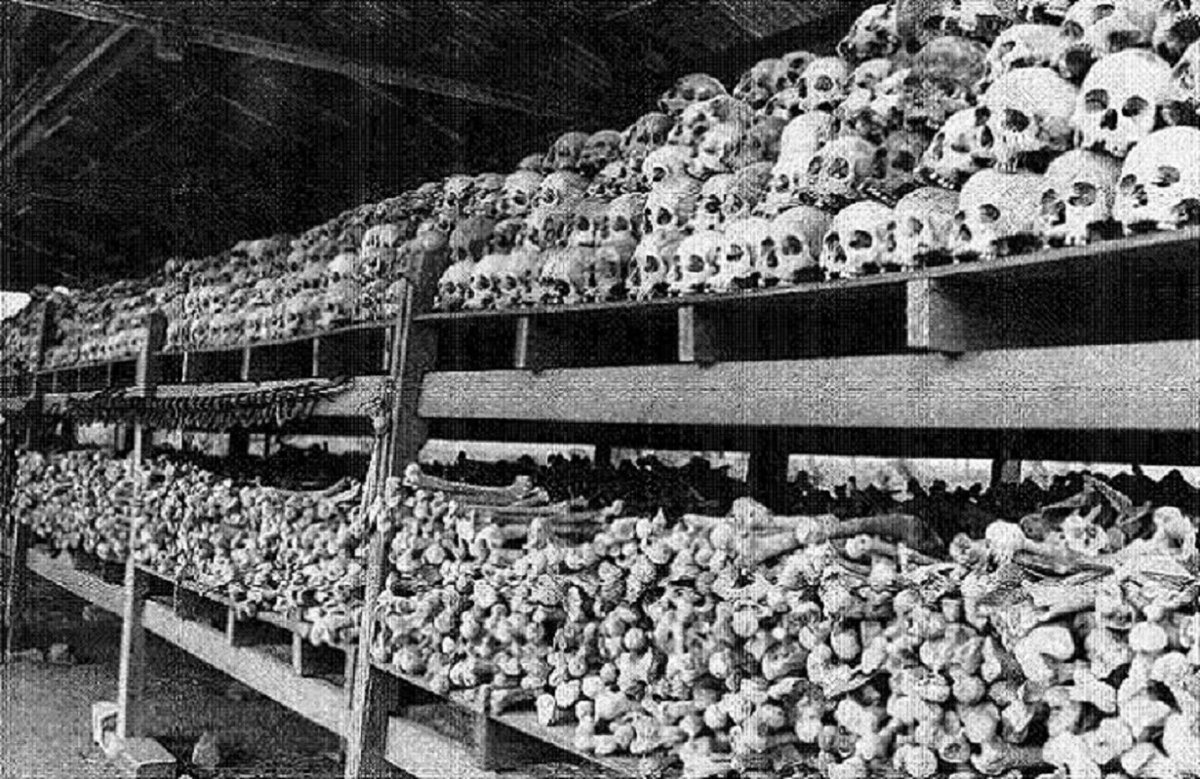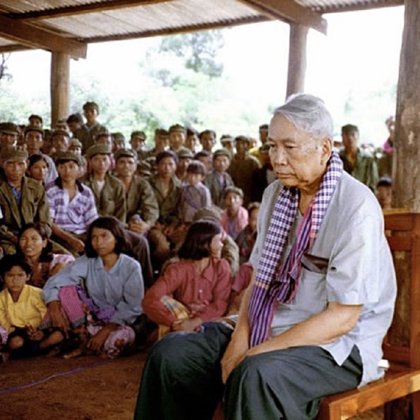POL POT ( 1925 – 1998,) THE LEADER OF KHMER ROUGE REGIME AND THE GENOCIDE OF 3 MILLION CAMBODIANS.POL POT WAS NEVER BROUGHT TO TRIAL FOR HIS CRIMES.CAMBODIA REFUSED TO ESTABLISHMENT OF INTERNATIONAL WAR CRIMES TRIBUNAL.
 Cambodia:
Sihanouk's love affair with North Korea.The Khmer Rouge’s was a king ,
and life-long friend of North Korea.Sihanouk, the so called
‘King-Father’ of Cambodia , he didn’t have any gold medals to his name,
although the totalitarian leader excelled elsewhere: he holds the
Guinness World Record for the greatest number of political offices held
by one individual.He
was, across a six decade career, a prince, a king, a dictator, a
president, a prime minister (twice), and a leader-in-exile. Kim Il-Sung
loved the guy, and built him a huge Angkor Wat-style palace as a second
home. When he died on 15 October, top DPRK officials were quick to send
condolences for a man who was, for decades, one of Asia’s most infamous
Cold War figures, and a friend of the Kim dynasty like few others. North
Korea has lost one of its few true allies, and it could mark the end of
a particularly special relationship between the DPRK and Cambodia.But
a right-wing military coup toppled head of state Prince Norodom
Sihanouk in 1970, the Khmer Rouge entered into a political coalition
with him and began to attract increasing support.
Cambodia:
Sihanouk's love affair with North Korea.The Khmer Rouge’s was a king ,
and life-long friend of North Korea.Sihanouk, the so called
‘King-Father’ of Cambodia , he didn’t have any gold medals to his name,
although the totalitarian leader excelled elsewhere: he holds the
Guinness World Record for the greatest number of political offices held
by one individual.He
was, across a six decade career, a prince, a king, a dictator, a
president, a prime minister (twice), and a leader-in-exile. Kim Il-Sung
loved the guy, and built him a huge Angkor Wat-style palace as a second
home. When he died on 15 October, top DPRK officials were quick to send
condolences for a man who was, for decades, one of Asia’s most infamous
Cold War figures, and a friend of the Kim dynasty like few others. North
Korea has lost one of its few true allies, and it could mark the end of
a particularly special relationship between the DPRK and Cambodia.But
a right-wing military coup toppled head of state Prince Norodom
Sihanouk in 1970, the Khmer Rouge entered into a political coalition
with him and began to attract increasing support.
Cambodia is a small nation of some 180,000 square kilometres, lying south-west of Vietnam and also sharing borders with Thailand and Laos. By 1960 Cambodia’s population was around six and a half million people, the majority peasant farmers. Like its northern neighbour Laos, Cambodia became an unwilling battleground in the Vietnam War. During the mid 1960s its eastern regions were infiltrated and invaded by North Vietnamese and Viet Cong troops. This led to American intervention in Cambodia, most noticeably a sustained bombing campaign. In the period 1969-70, the United States dropped more bombs on Cambodia than it had used in the entirety of World War II. This foreign intervention and disruption had a profound effect on Cambodia’s development. It contributed to the rise of the Khmer Rouge, a communist paramilitary that became one of the most murderous regimes in human history.The Cambodian-Vietnamese War , it seems to be very much accepted that the recent (1979–89) “war” was instigated by Khmer Rouge incursions into Vietnam that resulted in the deaths of many Vietnamese farmers and Cambodian refugees. Vietnam retaliated and was between the Socialist Republic of Vietnam and Democratic Kampuchea. However, the events have been forgotten by the rest of the world in comparison with the more widely known Vietnam War. Here are seven facts not known about the Cambodian-Vietnamese War.However, the events have been forgotten by the rest of the world in comparison with the more widely known Vietnam War. Here are seven less well-known facts about the Cambodian-Vietnamese War.The War started because Cambodia repeatedly invaded Vietnam, attempting to retake the Mekong River Delta. The country felt the area belonged to them and continuously raided Vietnamese areas on the border. Also, the Cambodian troops exterminated the Vietnamese living within Cambodia.The defining moment, however, came when the Khmer Rouge raided Ba Chuc and killed more than 3,000 Vietnamese. The massacre is still deeply felt today, and visitors can see memorials to the victims.The Cambodians leader at the time was a man considered to be one of the world’s cruelest leaders, Pol Pot. He was a dictator who caused the deaths of about 25 percent of the Cambodian population, or as many as three million people over the course of four years. The deaths were caused by a combination of executions, forced labor, and malnutrition.Cambodia, once part of French Indochina, is an ancient Hindu and Buddhist kingdom world famous for the beautiful temples at Angkor Wat. For many years it was ravaged by the effects of the Vietnam War and the oppressive regime of the evil Khymer Rouge. The country is now rehabilitated and, though poor, is again seeking to establish itself as a tourist destination and one of the friendliest countries in South East Asia. Even today the evidence of the war and the genocide is obvious on the streets as victims of landmines walk the streets and tourists are encouraged to visit the museums dedicated to the atrocities to ensure that the world does no forget the evil perpetrated in this beautiful place.Often overshadowed, in the west, by the contemporaneous events in neighboring Vietnam it is every bit as important that the world bears witness to the horrors of the Cambodian genocide as the Nazi holocaust or the death camps of Stalinist Russia. With that in mind here are 10 things everyone should know about the Cambodian genocide.Pol Pot’s communist Khmer Rouge initially gained significant public support due to their opposition of the previous regime and its support for the American bombing of North Vietnamese camps in the remote areas of Cambodia. The Khmer Rouge was, as a result, initially well supported by the North Vietnamese. Following a coup in 1970 Pol Pot’s Khmer Rouge gained the unlikely support of the former ruler Prince Shianouk.As they gained power and influence in their own country the Khmer Rouge sought to purge those who had been trained and influenced by the Vietnamese. They subsequently started to espouse a more extreme form of communism. By 1975 the Khmer Rouge had taken the capital Phnom Penn and had control of the country. Having broken with their former Vietnamese patrons they looked towards communist China for support. They maintained control of the country until 1979 and, in those four years, oversaw the descent of the nation into hell.The Khmer Rouge were overthrown when the Vietnamese invaded Cambodia and installed their own regime. They continued to fight the new regime and, as the Vietnamese were viewed as an invading as opposed to liberating force, were viewed by the west as being the legitimate government of the country; they even retained control of the Cambodian seat at the United Nations until 1982. There are allegations that the US and UK provided support to the Khmer Rouge in their fight against Vietnam.Vietnam invaded Cambodia in 1978 in order to defeat Khmer Rouge troops. By now the world have known that Khmer Rouge was a vicious regime that committed genocidal crimes against its own people. Inspired by China’s Great Cultural Revolution in the 1960s, Polpot and his comrades vowed to “purify the masses of the Cambodians”, killing at least 1.5 million people. But little was known about the massacres and raids launched against Vietnamese civilians along Vietnam-Cambodia border during the 1975-1978 period, with the most brutal one being the 3000-death toll Ba Chuc massacre, 7 kilometres from the border. Vietnam’s attempts to seek a settlement with Cambodia failed. Finally, in response to a large scale attack (about 50,000 to 60,000 troops) from Khmer Rouge in Dec 1978, Vietnam started a full war against the Polpot’s regime.Khmer Rouge troops were quickly defeated; however, they withdrew to the Thailand-Cambodia border and remained active there for 15 more years thanks to the military and financial support from China and the tolerance of the then Thai government. China and the US were also very vocal about Vietnam invading a sovereign nation, demanding international sanctions against Vietnam while hiding the facts about the terrible regime that they supported. Their diplomatic campaign was a success. In subsequent years, Vietnam was met with much international criticism and severed diplomatic relations due to this campaign and also due to the fact that Vietnam’s troops remained in Cambodia for a long time (1979-1989), much in the same way that the USSR stayed in Afghanistan and the US in Iraq and Afghanistan recently.The problem really stems from the long period of occupation after the initial retaliation. The way I read it as an informed bystander is that the Vietnamese army really did not expect the Khmer Rouge to fold so quickly. Phnom Penh is 200 miles from Saigon but in 2 days or less, suddenly the Viet troops found themselves in the Cambodian capitol .The story then gets more complicated with the discovery of the Killing Fields, the Torture chambers of the Angkor regime under Pol Pot and the realization a huge percentage of the Cambodian population, especially the educated, the doctors and teachers and engineers had been put to death.
 Pol
Pot’s communist Khmer Rouge initially gained significant public support
due to their opposition of the previous regime and its support for the
American bombing of North Vietnamese camps in the remote areas of
Cambodia. The Khmer Rouge was, as a result,
initially well supported by the North Vietnamese. Following a coup in
1970 Pol Pot’s Khmer Rouge gained the unlikely support of the former
ruler Prince Shianouk.As they gained power and influence in their
own country the Khmer Rouge sought to purge those who had been trained
and influenced by the Vietnamese.
Pol
Pot’s communist Khmer Rouge initially gained significant public support
due to their opposition of the previous regime and its support for the
American bombing of North Vietnamese camps in the remote areas of
Cambodia. The Khmer Rouge was, as a result,
initially well supported by the North Vietnamese. Following a coup in
1970 Pol Pot’s Khmer Rouge gained the unlikely support of the former
ruler Prince Shianouk.As they gained power and influence in their
own country the Khmer Rouge sought to purge those who had been trained
and influenced by the Vietnamese.
Prior to the Vietnam War Cambodia was led by Norodom Sihanouk, a charismatic young prince with a taste for Western culture, particularly the music of Elvis Presley. Sihanouk produced his own films, organised public processions and parades, and gave long, rambling speeches on Cambodian radio. Though not short on ego, Sihanouk was both a political progressive and a nationalist who wanted the best for its people. When the French granted Cambodia independence in 1953, Sihanouk took the radical step of abdicating as king and running as a democratic candidate. His popularity saw him elected as prime minister. Though initially pro-American, Sihanouk adopted a more neutral position following American military intervention in Vietnam in 1965. This placed Sihanouk and his government in a difficult position, given Cambodia’s extensive and largely uncontrolled land borders with Vietnam. Thousands of North Vietnamese Army (NVA), Viet Cong and Cambodian communists moved freely across these borders, using Cambodia’s eastern regions for stashing supplies, taking refuge and transiting men and material to South Vietnam. Cambodian farmers also traded rice and other products with communists soldiers and revolutionaries.

 Black-clad
Khmer Rouge soldiers charged into Phnom Penh and were welcomed with
cheers, remembers Chhung Kong, a teacher in the Cambodian capital during
the 1970s.Few foresaw the horrors that lay ahead as Pol Pot's communist
army, victorious over the US-backed republican army of Lon Nol, seized
control early on April 17, 1975.Four
years later Chhung had lost 16 of his relatives to the regime, Phnom
Penh was deserted and his school transformed into the Tuol Sleng, or
S21, torture chamber - one of the most grotesque emblems of a paranoid
rule that wiped out a quarter of Cambodia's population.
Black-clad
Khmer Rouge soldiers charged into Phnom Penh and were welcomed with
cheers, remembers Chhung Kong, a teacher in the Cambodian capital during
the 1970s.Few foresaw the horrors that lay ahead as Pol Pot's communist
army, victorious over the US-backed republican army of Lon Nol, seized
control early on April 17, 1975.Four
years later Chhung had lost 16 of his relatives to the regime, Phnom
Penh was deserted and his school transformed into the Tuol Sleng, or
S21, torture chamber - one of the most grotesque emblems of a paranoid
rule that wiped out a quarter of Cambodia's population.
In order to build their new agrarian society the Khmer Rouge attempted to wipe out all evidence of any other type of life. Factories, schools, universities and hospitals were shut down as they were superfluous to the needs of the new regime. Some were put to new ‘appropriate’ uses such as prison camps.Emotions were banned; people had to cultivate a complete lack of any kind of facial or body language emotional response to situations. Falling in love was anathema, marriages were contracted by the state and any couple found engaged in (and enjoying) sexual relations not specifically permitted by the Khmer Rouge could result in the people involved being sent to a prison camp. Families were broken up between different farms with no effort being made to keep them together.Religion was termed reactionary and all religious worship was banned. Personalized clothing was seen as an extravagance; all Cambodian had to wear a black uniform and were not permitted to move away from the collective farm they were assigned to.Modern, energy saving appliances were gathered together and destroyed. The victory of the Khmer Rouge led to things such as fridges, music players and air conditioners being gathered together and burned in the street. Music in all forms was banned, as was reading (books went up in flames to prove the point) and money disappeared from use.
 Cambodia: Khmer Rouge leaders Pol Pot and Ieng Sary meet Chairman Mao Zedong, Beijing, 1976.
Relations between Phnom Penh and Washington became more difficult and
began to sour. In May 1965 it collapsed altogether when Sihanouk broke
off diplomatic relations with the US, a move that curtailed US aid to
Cambodia. Sihanouk decided to develop a relationship with China, a
nation he correctly believed would eventually dominate the Asian
hemisphere.
Cambodia: Khmer Rouge leaders Pol Pot and Ieng Sary meet Chairman Mao Zedong, Beijing, 1976.
Relations between Phnom Penh and Washington became more difficult and
began to sour. In May 1965 it collapsed altogether when Sihanouk broke
off diplomatic relations with the US, a move that curtailed US aid to
Cambodia. Sihanouk decided to develop a relationship with China, a
nation he correctly believed would eventually dominate the Asian
hemisphere.
China’s
punishment of Vietnam came on Feb.17, barely two weeks after
Deng returned from the United States. China’s cross border attack on
Northern Vietnam was purely punitive. Vietnamese troops remained in
Cambodia for a decade.Among the Khmer Rouge defectors brought
to Phnom Penh in January 1979, was Hun Sen, Cambodia’s future prime
minister. During seven years fighting with the Khmer Rouge, Hun Sen had
risen to the rank of Eastern Battalion Commander. In June, 1977 he fled
with his cadres to Vietnam.Schaefer said the Vietnamese
constantly complained over the years to their East German partners that
it was hard to determine the real backgrounds of Khmer defectors in
exile or cadres volunteering for work in Vietnamese-occupied Cambodia.As
a leader of the
Vietnamese-sponsored rebel army, Hun Sen was appointed Deputy Prime
Minister of the Vietnamese-installed People’s Republic of
Kampuchea.Initially, Hun Sen appears rarely in files that Schaefer read.
In 1981,
he briefed Communist bloc ambassadors that a Cambodian government
member had been purged and detained by the Vietnamese “for not
fulfilling his internationalist duties.”Fulfilling
internationalist duties” was a code phrase for fully cooperating with
Vietnam. Cambodian “nationalism” as defined by Vietnam meant opposition
to Vietnam’s occupation.In contemporary Cambodia, the political
opposition takes a strong
anti-Vietnamese stance. Schaefer says that modern politics blind many
young Cambodians to the realities of 1978, a time when no end was in
sight to the Khmer Rouge nightmare.They did not primarily act because
they wanted to end the genocide,’
Schaefer said, referring to the Khmer Rouge rule. During nearly four
years in power, Khmer Rouge implemented policies that killed about one
quarter of Cambodia’s population. “They wanted to get rid of an
anti-Viet Nam government, and put in a pro-Viet Nam government. And in
doing so, they got rid of the Khmer Rouge government. And that is a
fact.”There
were so many methods of torture with regards to Pol Pot's Khmer Rouge
that it is simply unbelievable. Iron beds were loaded into prisons like
S-21, with restraints attached to make torture easier (though some
people were simply burned alive on these
very beds). Vivisections were common, where a victim would be cut open,
and have their organs pulled from their body, whilst both conscious,
and without anesthetic. Some people were slowly drowned. Others were
slowly drained of their blood to see how long they could survive.
Electric shock was also used...and for those prisoners who caused the
administration the most grief they were skinned alive. And of course
there was the added psychological torture of watching children being
beat against trees and posts. That alone must have made people beg for
death.Cambodia
refused to permit the establishment of a Yugoslav style international
war crimes tribunal. They have, however, come together with the United
Nations to set up the Extraordinary Chambers in the Courts of Cambodia
to prosecute the crimes perpetrated
by the Khmer Rouge, sadly because the court was not established until
2003 many of the guiltiest parties, including Pol Pot, had already
evaded justice through death.Five people have been charged with crimes
before the court. Of these the most notorious was Kang Kek Iew who ran
the infamous S-21. He had converted to Christianity in the interim time
and admitted his responsibility and guilt and even asked for his victims
to allow the possibility of forgiveness. He was sentenced to 35 years
in jail and by reason of credit for time served pre-trial and time for
good behavior he will serve a sentence of only 19 years. Whether or not
the God he now claims to worship will forgive him for the horrors he
perpetrated on his fellow men and, in particular the deaths of 2000
little children, only Comrade Duch will ever know.Other people who have
appeared before the court include Nuon Chea (Brother Number Two to Pol
Pot’s Brother Number One), the chief architect of the agrarian ideal and
the Year Zero plan. He will serve the rest of his life in prison. Kiehu
Samphan, the Khmer Rouge Head of State from 1976 to the fall of the
regime was also sentenced to life in prison.The only other two people
charged have managed to escape the wrath of the court. Ieng Sary,
Brother Number Three who was the Khmer Rouge Minister for Foreign
Affairs and Deputy Prime minister died before his trial was finished.
Ieng Thirith, his wife, was the Khmer Rouge Minister or Social Affairs
and responsible for many of the Khmer Rouge’s purges. She was declared
medically unfit to stand trial.The whole trial process has been slow and
deeply unsatisfactory for many of the ordinary Cambodians who are still
traumatized by memories of that time.The
Cambodian Genocide did not happen in the mists of some dark distant
time, it did not happen in some obscure corner of the globe. In the
years leading up to the genocide the attention of the world and its
super-powers was focused on South East Asia,
it happened within living memory. Babies born in the west at the same
time as those whose brains were bashed out against trees celebrated the
turn of the millennium as college students.Those people who endured the
terrors of the Khmer Rouge were saved only by the Vietnamese Invasion
(after which they endured even more suffering) and received aid only
from the Soviet Union and its Warsaw Pact allies. Caught on the wrong
side of cold war politics these victims were conveniently forgotten by
the west. There are even allegations that the US and UK supported the
Khmer Rouge government in exile with weapons, training and funding
(although to be fair such allegations are rarely substantiated and
usually come from very far left sources who have an interest in
blackening the reputations of the right wing Reagan and Thatcher
governments of the time).Cambodia is still dealing with the ravages of
the genocide and its aftermath. A whole generation is scarred by the
atrocities witnessed and many lack a decent or even a basic education.
Many in government were once involved with the Khmer Rouge and it will
take many years for the nation to be at ease with itself once more. It
is all too easy to read about such events and promise ‘never again’. We
educate our children on the Nazi Holocaust to ensure that it acts as a
warning to future generations. Hopefully the mute charnel houses of
Cambodia will be as powerful a signal to the future as the terrifying
gates of Auschwitz.
 On
this day in 1975, Pol Pot’s Khmer Rouge captured Cambodia’s capital
Phnom Penh and declared revolutionary Year Zero. After five years of
bloody civil war, the conquering Communist guerrillas were welcomed as
heroes by a relieved population desperate for peace – but the relief was
to be short-lived. Within twenty-four hours, members of the deposed Lon
Nol government, public servants, police, military officers, ethnic
Vietnamese, Christian clergy, Muslim leaders and middle-class citizens
were identified and executed. Schoolteachers, students, doctors and
those who simply wore glasses or knew how to read were murdered for
being “intellectuals”. Foreigners were expelled, embassies closed and
the currency abolished.
On
this day in 1975, Pol Pot’s Khmer Rouge captured Cambodia’s capital
Phnom Penh and declared revolutionary Year Zero. After five years of
bloody civil war, the conquering Communist guerrillas were welcomed as
heroes by a relieved population desperate for peace – but the relief was
to be short-lived. Within twenty-four hours, members of the deposed Lon
Nol government, public servants, police, military officers, ethnic
Vietnamese, Christian clergy, Muslim leaders and middle-class citizens
were identified and executed. Schoolteachers, students, doctors and
those who simply wore glasses or knew how to read were murdered for
being “intellectuals”. Foreigners were expelled, embassies closed and
the currency abolished.

